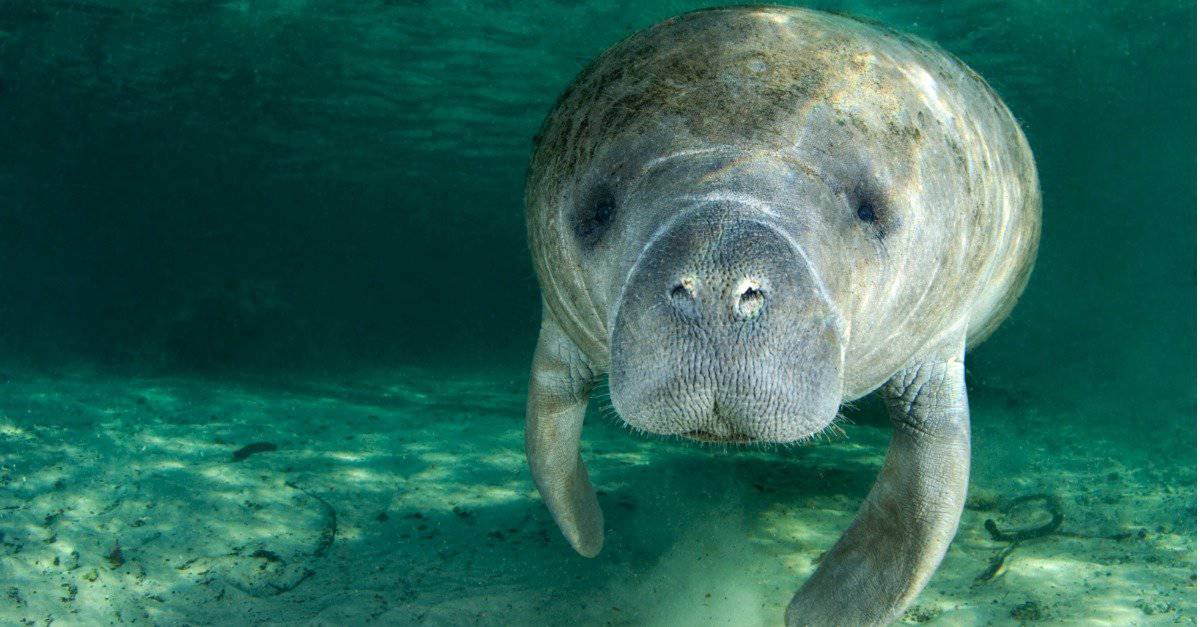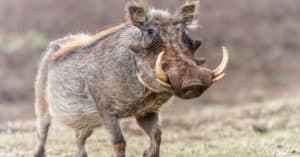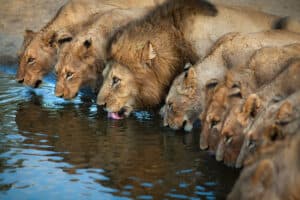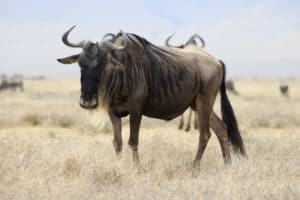Manatees, dugongs, and their extinct members of the Sirenia order are all names for animals that are lovingly referred to as sea cows. The members of the Sirenia order are famous because sailors from the time of antiquity would see these animals basking on rocks and mistake them for the Sirens of legend. However, that doesn’t mean these animals are human-like. In fact, we’re going to explore the sea cow vs manatee and give you an idea of how these animals compare and the origin of their moniker.
What Are Sea Cows?
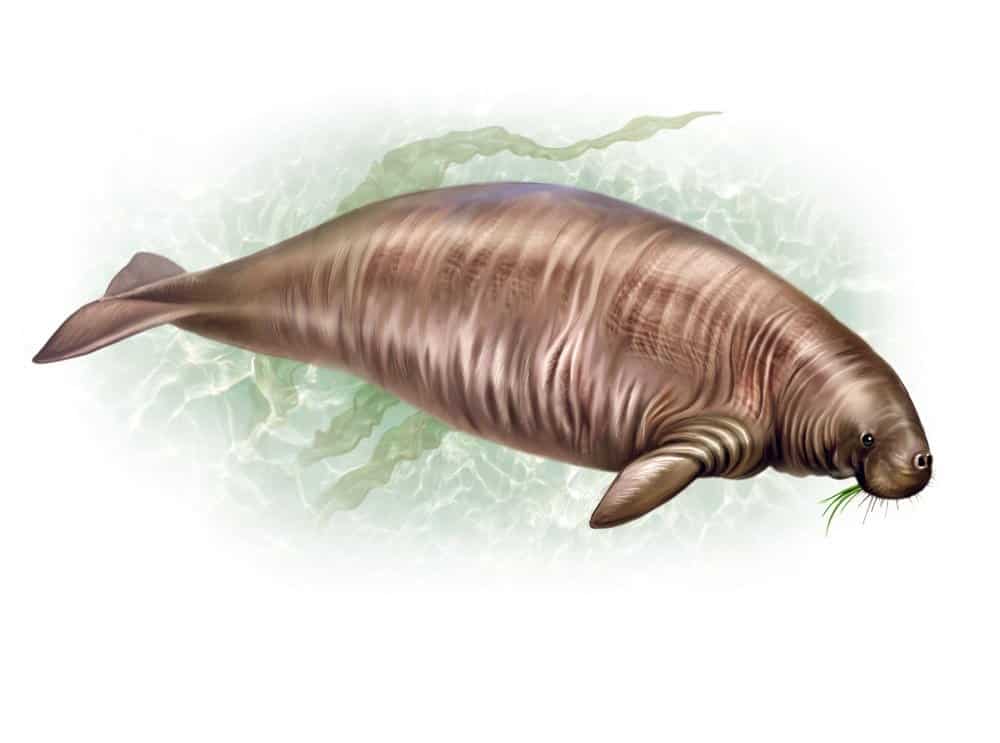
Steller’s sea Cow was a massive creature that lived in the Bering Sea
©Liliya Butenko/Shutterstock.com
Sea cows are the informal name of the Sirenia order of animals. They’re all large, water-dwelling creatures with some of them living in fresh water and others living in the sea. Generally speaking, the informal name “sea cow” refers to any three of the following animals.
- Steller’s Sea Cow
- Dugong
- Manatees
In that sense, a manatee and a sea cow could refer to the same animal. However, for our purposes, we’re going to look at how the true sea cow, Steller’s sea Cow, compares to the manatee.
Why Are Manatees And Dugongs Called Sea Cows?
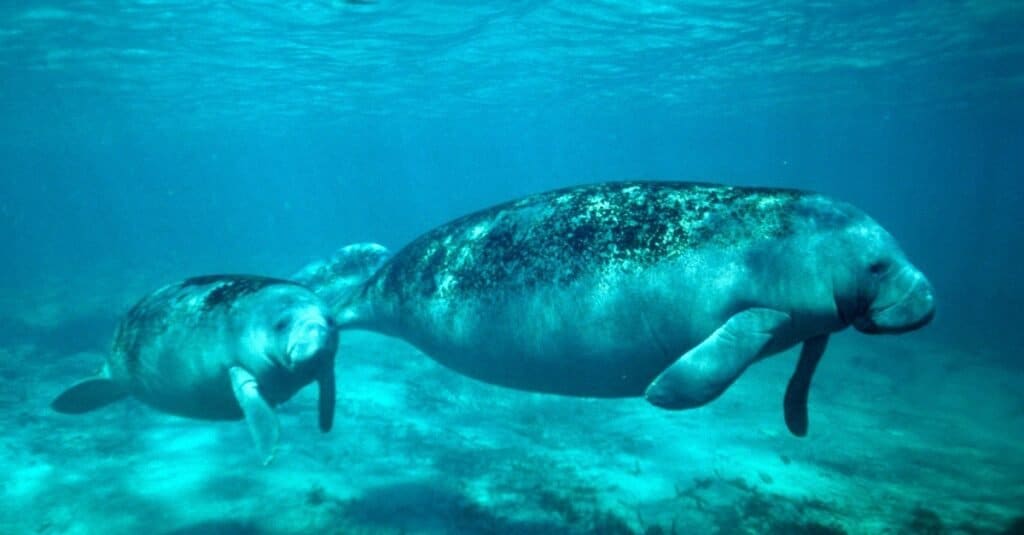
“Sea Cow” refers to the creatures’ habit of spending a lot of time grazing.
©iStock.com/stammphoto
Manatees and dugongs are called sea cows because they are very large creatures, weighing several hundred or over a thousand pounds, and they primarily eat grass and other vegetation that grows on the bottom of rivers, seas, and other bodies of water. Since they spend so much time grazing for their food, they were referred to as “sea cows”.
However, some animals, like the dugong, are called sea cows because they share a resemblance to the Steller’s sea cow, a creature that may have been the origin of that term. Now, the Steller’s sea cow is extinct, the dugong is near extinction, and the manatee is the only animal that looks and acts like a sea cow.
Comparing a Sea Cow vs Manatee
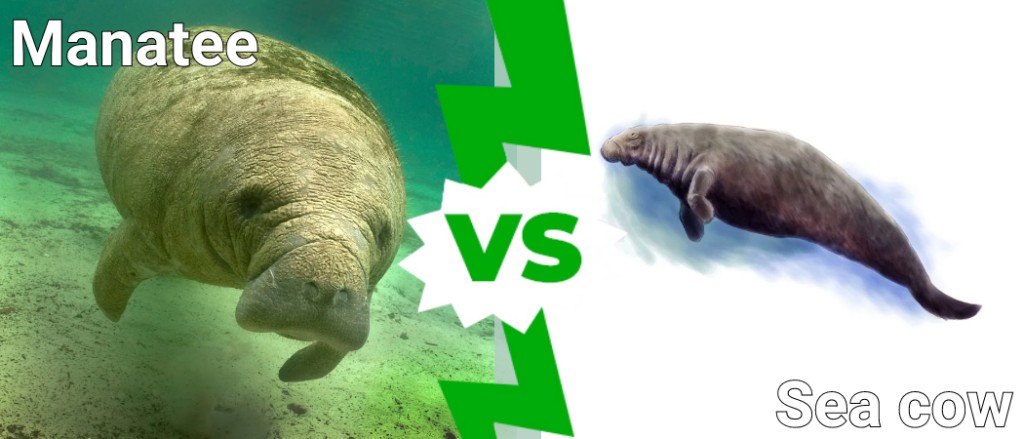
| Sea Cow | Manatee | |
| Size | Weight: 10,000-20,000lbs Length: 26-30ft | Weight: 800lbs 1,200lbs Length: 9-13ft |
| Conservation Status | Extinct | Endangered |
| Range | – Bering Island – The Bering Sea | – Parts of the U.S., Africa, and Amazon River |
| Lifespan | – 50-80 years | – 50-70 years |
| Habitat | Sea water | – Salt water, fresh water, brackish waters – Rivers, oceans, bays, and more – Amazonian Manatee species only lives in fresh water |
| Teeth | Bristles on its lip and keratinous plates to help “chew” food | 6-12 teeth on their cheeks that aid with chewing |
The 6 Key Differences Between a Sea Cow vs Manatee
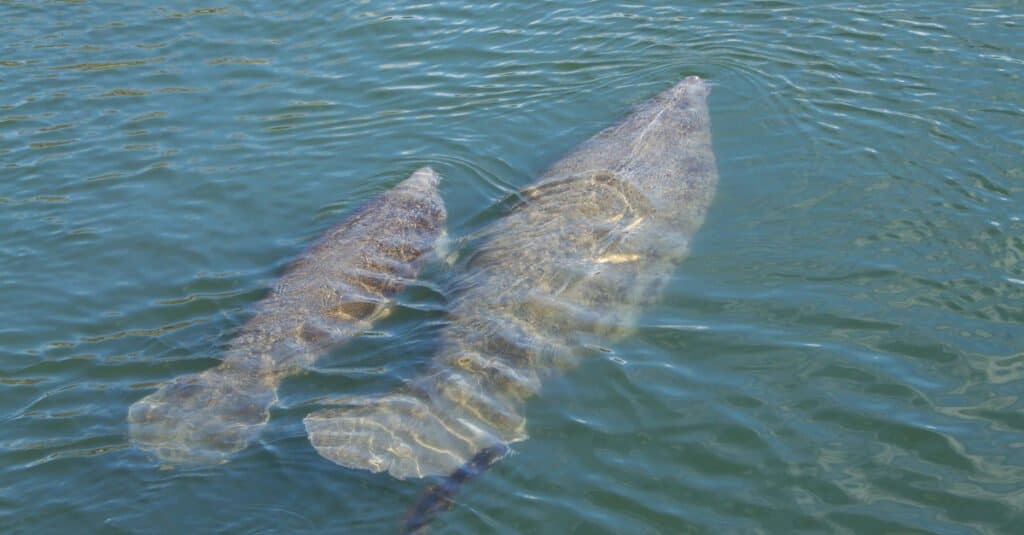
Steller’s sea cow only lived in sea water, but manatees live in fresh water and sea water.
©romarti/Shutterstock.com
The key differences between a sea cow and a manatee include their conservation status, habitat, size, and lifespan. The sea cow, specifically Steller’s sea cow, is extinct these days. Sea cows, as the name implies, live solely in the seawater. However, manatees can live in fresh, brackish, and salt water.
Sea cows are bigger than manatees and they live longer than them, too. These are the most significant differences between these animals.
Sea cows is a term that refers to several species of animals from the Sirenia order, but manatees are unique species that have several subspecies such as the Amazonian manatee or the West Indian Manatee.
Sea Cow vs Manatee: Size
The sea cow was larger than the manatee by quite a bit, believed to weigh between 10,000lbs and 20,000lbs with some estimates going even higher than that. The manatee weighs between 800lbs and 1,200lbs, though.
The sea cow both weighed more and grew longer than the manatees of today. The sea cow grew to almost 30ft in length while the manatee only measures about 13ft long.
Sea Cow vs Manatee: Conservation Status
Steller’s sea cow is extinct, and the manatee is endangered. Steller’s sea cow has been extinct for about two centuries. The animal was first discovered in 1741 by a naturalist named Georg Steller. In just 27 years, the animal was hunted to extinction for its meat, skin, and blubber.
The manatee still lives today in some areas around the world, but it’s endangered. Between habitat loss, hunting, and collisions with boats, this animal faces serious challenges.
Sea Cow vs Manatee: Range
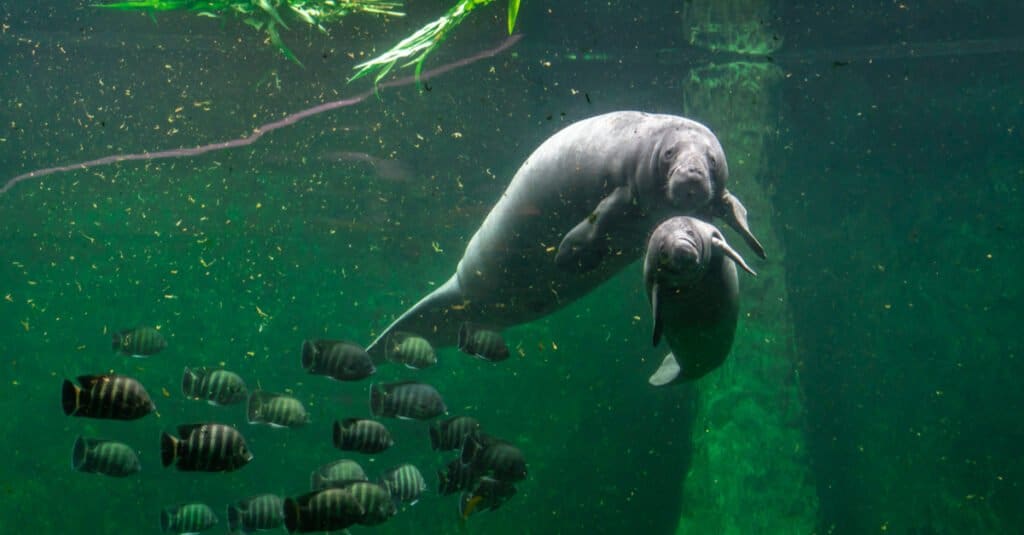
Manatees live in
Africa
, the U.S., and parts of South America.
©Lukasz Machowczyk/Shutterstock.com
Steller’s sea cow is believed to have only lived in the Bering Sea around Bering Island, but the manatee has a range in the United States, Africa, and the Amazon River. The small range of the sea cow is what led to its rapid extinction. The animals were all concentrated in a single area.
Sea Cow vs Manatee: Lifespan
The lifespan of a sea cow and that of a manatee are somewhat similar. Both animals could regularly exceed 50 years of age when they were not being hunted and killed. However, the sea cow is believed to have lived up to 80 years of age whereas a manatee would only live to the age of 70.
Sea Cow vs Manatee: Habitat
Steller’s sea cow only lived in salt water, but manatees can live in salt water, fresh water, and brackish waters. However, not every species of the manatee prefers to live in both. In fact, only the Amazonian manatee lives in fresh water for its entire life.
Sea Cow vs Manatee: Teeth
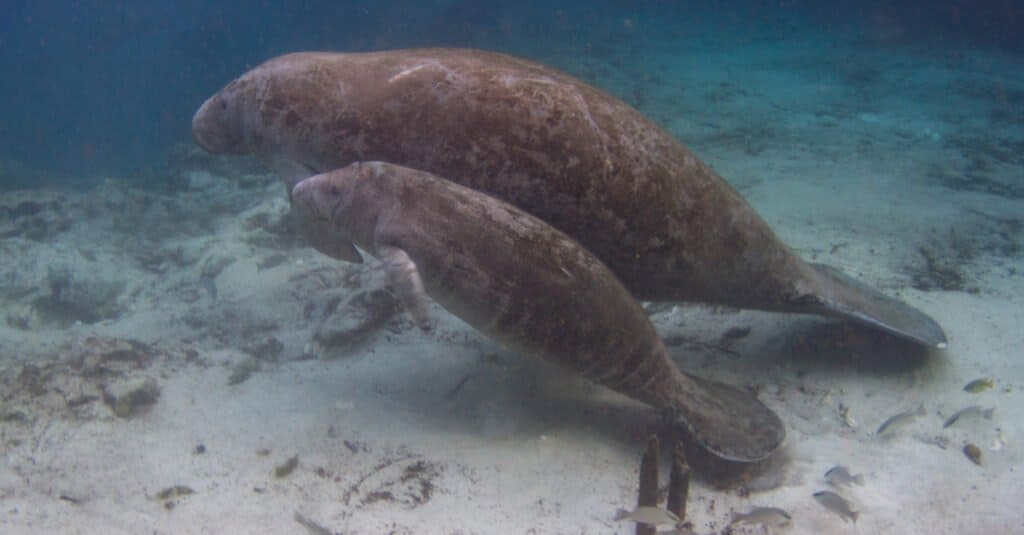
Manatees have about six teeth in their cheeks that help them chew
©Peter Douglas Clark/Shutterstock.com
Steller’s sea cow had bristles on its lip to guide food into its mouth and then it had keratinous plates in its mouth that helped it chew. Manatees usually have about six teeth in their mouths on their cheeks that help them chew the large amount of seagrass they eat.
These creatures essentially suck the seagrass out of their habitats before chewing it. Manatees spend much of their time awake grazing for food and then quite a bit of time actually eating it.
Sea cows is a term that is applied to manatees, but the term applies to other animals, too. The extinct Steller’s sea cow might have been the origin of the term, but dugongs, manatees, and other extinct creatures also share the name.
Comparing these animals to one another shows that the Steller’s sea cow was a massive creature, and it’s unfortunate that humans lack any pictures of the animal and that people in the past hunted them so ferociously.
Thank you for reading! Have some feedback for us? Contact the AZ Animals editorial team.

